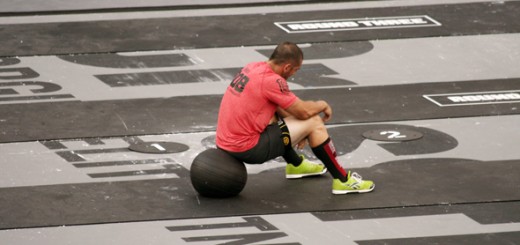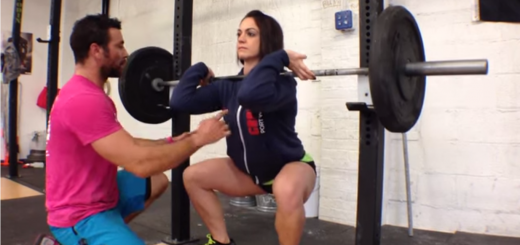The Bench Press: Part 4 – Pro Advice From The Trenches
In Part 1 and Part 2 we covered mainly form and how to reduce injury when lifting. Part 3 discussed the LIES and MYTHS of the bench press including shoulder injury, ideal pressing movements and involved muscles. Part 4 offers advice from the trenches. Guys who have been there, been injured, recovered and found better ways to achieve the pump without the shoulder havoc.
6 Heavy Bench Press Lessons

Here’s what you need to know…
• When trying to bring up the bench press, don’t focus on bench press variations at the expense of overhead work. For your bench to go up, you should make overhead work a priority, not an afterthought.
• Unlike the squat and deadlift, bench press performance correlates strongly with bodyweight.
• Band work between sets is a great way to keep the shoulders and upper back healthy.
• If you have wonky shoulders, consider using the thumbless “suicide” grip instead of a full grip.
• Never miss a rep. If you’re not at least 80% sure that you’ll make the lift, don’t even attempt it.
I’ve been training for most of my life. I’ve clocked literally thousands of hours coaching clients, reading and writing books and articles, and fighting under the bar. If it takes 10,000 hours to become an expert in weight training, let’s just say I became an “expert” years ago.
The cool thing about reaching a level of mastery in any endeavor is that it teaches you very significant lessons along the way. At the time these lessons may appear as setbacks or plateaus, even injuries. However, if you persevere, you come out better, stronger, and a lot wiser. Here’s what the bench press has taught me.
1. Raw bench press strength is highly correlated with shoulder size and strength.
I learned years ago that whenever my overhead strength increased (either push pressing or military pressing more), my bench went up significantly. Not only did I lift more weight, it felt easier and smoother. The fact is, my biggest bench press came at the end of a shoulder specialization program, not a bench press program.
While I understood how getting stronger shoulders helped with the bench press, for some reason it took me longer to realize how losing shoulder size and strength decreased bench press performance. It happened when I decided to drop overhead work in favor of more bench pressing. I figured that by increasing the volume of chest work that I’d progress faster on the bench press. My triceps certainly grew stronger, as did my chest. I also noticed that both body parts gained a significant amount of mass.
However, my bench press strength stalled and eventually went down. Soon, everything felt heavier, and my shoulders lost fullness. Only when I went back to overhead work did I noticed how much weaker my delts had become. It got me thinking: Every time I lost deltoid size my bench press suffered. Sometimes I was able to keep lifting similar weights, but they felt much heavier and more stressful on my body.
The moral of the story is that to bench press big weights you need very strong and large deltoids. (This obviously applies to raw bench pressing, not using a bench shirt.)
Real life application: When trying to bring up the bench press we tend to focus on bench press variations at the expense of overhead work. That’s a mistake. For your bench to go up, you should make overhead work a priority, not an afterthought.
One way is to start every bench press session with an overhead lift (push press, military press, dumbbell press) performed for 5 sets of 5 reps. At first your bench press poundages will go down as you’ll be more fatigued, but after a few sessions it should go right back up. Eventually you’ll be much stronger training that way.
2. The bench press is the lift most affected by weight loss.
It would seem logical that the squat and deadlift should be more affected by weight loss than bench pressing. After all, the former are a lot more demanding on the body and make use of leverage more than the bench press.
Even losing water weight affects bench press performance. For example, a few years ago while I was benching twice a week, I hit a 425-pound bench press on Monday. On Friday my wife and I enjoyed a long hot tub session. The next day I was 6 pounds lighter (from dehydration) and while I still felt really good going into the workout, I failed to hit even 365 pounds! Certainly I didn’t lose any muscle in 24 hours, but the fact that I lost some water weight killed my bench press.
Furthermore, I’ve found that my bench pressing performance is highly correlated with my bodyweight. If I’m 195 pounds I can bench press 325. When I’m 205 I can bench press 365, and when I go up to 215 I can bench 385. At 225 I can do 405, and if I reach 230-235 I can bench press 425. This applies even if my muscle mass is about the same at each bodyweight; a phenomenon that even holds true for all bench press assistance exercises.
Also, if either my clients or I do a bench press session after a big cheat day, we can bench press a lot more because of water retention and increased glycogen stores. On the other hand, performance during a hard squat workout after a cheat day stays about the same, and for a deadlift session performance can actually go down.
Still, the bench press is the lift most affected by weight loss, the strict military press is second, the squat third, and the deadlift is the least affected, so it seems that any lift involving the shoulder joint is significantly sensitive to weight loss.
Also of note is that when I lose weight (water, fat, or muscle), the first thing that seems to get smaller is my shoulders, which is interesting considering point number one.
Real life application: When trying to lose fat you should do everything possible to at least maintain your strength. This is the best way to avoid losing muscle mass. However, be aware that the bench press is easily affected.
I recommend trying to maintain your strength but using slightly higher reps. Performance for sets of 5-7 reps doesn’t seem to be affected as much as sets of 1-3 reps. That rep range should still allow you to maintain your strength while dieting down.
For those lifting mostly for strength, make sure you’re not dehydrated when attempting a heavy bench workout. Plazma™ has been specifically designed to increase muscle cell volumization.
3. Use the reverse-band bench press when you have sore shoulders.
It’s easy to start experiencing tender shoulders when you bench press big weights. This can indicate bad form or a muscle imbalance that needs to be addressed. Most of the time when this happens people stop bench pressing altogether until their shoulders get healthier.
I’ve never had success with this approach. Upon returning to bench pressing my shoulders often started hurting again right away. I noticed the same thing with many clients – when you stop working a problematic area, it usually leads to even worse problems when you get back into it.
On the other hand, you don’t want to do a movement that causes pain. Powering through, biting the bullet, and continuing the exercise usually leads to a far greater problem.
A solution that works is to keep bench pressing, but with reverse bands – bands attached to the top of the power rack, hanging the bar from the bands. The reverse bands drastically decrease the amount of weight in the bottom position, which is the most vulnerable point of the bench press for the shoulders.
This technique allows you to keep the joint active while still practicing your bench press technique (or correcting it if that’s the cause of your problem) and overloading the pattern. That way when you can go back to standard bench pressing you’ll be physically and neurologically ready to go.
As a side note, I find the reverse band bench press to be superior to the regular bench press for chest and triceps contraction and stimulation, so you’ll likely build up some more mass while getting back to peak shape.
Real life application: When your shoulders are slightly painful, switch to reverse band bench pressing before the shoulder issue gets worse. Continue doing so until you’ve identified and fixed the root of the problem, which might be bad bench pressing technique.
This should allow you to keep practicing the movement while still overloading the muscles involved in the regular bench press movement pattern. Obviously if your shoulder still hurts while doing the reverse bands, don’t do it – seek out a good ART practitioner or soft tissue specialist.
4. Band work between sets works.
My most successful bench-pressing phase was characterized by doing band work in between sets. Biotest founder Tim Patterson and I had been experimenting with various types of band-only exercises for the back – slow pull-aparts and holds in various positions – with the goal of finding weak or sore spots and spending time contracting against the bands in those spots.
As such, I started to incorporate this band work in-between sets. There’s a small track in the Biotest gym, so after each set of bench press I’d perform various band holds while walking the length of the track and back, which gave me about a minute under tension. I’d then take 15-20 seconds and set up for my next bench press set. During that time I made very rapid progress on my bench press but more importantly, my shoulders felt their absolute best.
I recently began using this approach with a client who had shoulder issues. He went from doing 225-pound bench presses with shoulder pain to doing 275 pounds for 5 reps without any pain. It certainly works!
Real life application: Perform band pull-aparts and holds for 30-60 seconds per set between sets of bench pressing to maximize progress on the bench press.
5. Consider using a suicide grip when bench pressing to eliminate shoulder or triceps pain.
Using a “suicide” or thumbless grip when bench pressing is controversial. Many lifters are afraid they’ll drop the barbell when bench pressing, which is a very bad thing for your skeletal integrity. Others argue that since you can’t squeeze the bar as hard, you’ll get a sub-optimal performance because you’re not taking advantage of the irradiation effect (contracting a muscle hard leads to a better contraction of the surrounding muscles). However, through experience I’ve found that the thumbless grip offers many advantages, one of which is less shoulder strain.
I noticed years ago that bench pressing with a thick bar was less stressful on my shoulders. It took me a while to understand why. I asked many experts about it and never received a satisfactory answer. Today I can say that the reason is likely that the thick bar forced me to use a thumbless grip.
When you take a regular grip, your hands turn in slightly. This automatically forces you into an internal shoulder rotation position, meaning that the “natural” path you take when lowering the bar will have your elbows pointed outward/flared out.
This puts stress on the shoulder joint and if you try to tuck the elbows in – despite the natural inclination for the elbows to be out – you create a lot of torque at the elbow joint. So you either increase the stress on the shoulders or the elbows, neither of which is good.
By using a thumbless grip you can easily keep a more neutral hand position, which makes it much more natural to lower the bar while staying tucked. This reduces shoulder stress without increasing torque at the elbows, resulting in a less stressful bench press.
 Regarding the safety issue, I’ve used the technique for years for several workouts a week and I have fairly small hands. I use it with thick bars (2-inch), very thick bars (3-inch), and regular bars and have never once came close to losing control. The same is true of all the clients and athletes I’ve trained.
Regarding the safety issue, I’ve used the technique for years for several workouts a week and I have fairly small hands. I use it with thick bars (2-inch), very thick bars (3-inch), and regular bars and have never once came close to losing control. The same is true of all the clients and athletes I’ve trained.
I’m not saying that it can’t happen, but honestly, anybody who isn’t a total motor moron can become very comfortable with this grip. Any potential accident would likely happen due to bad form caused by using weights that you have no business trying in the first place.
Real life application: Try to get comfortable with the thumbless grip if you’re prone to shoulder or elbow injuries. Start fairly light for 2-3 workouts to become comfortable with the grip and give it an honest 3 weeks to see how your body feels using it. My experience tells me that most of you won’t go back to a regular grip.
6. Never miss a rep.
In his book, The Cube Method, Brandon Lilly says that you should never miss a rep in training. It got me thinking, and I can say with almost 100% certainty that I have not missed a single rep of the bench press in at least 5 years, probably more.
It’s not that I don’t train hard or that I use light weights. I’ve bench pressed as much as 435 pounds and did 425 for a double several times, but I never miss a rep. Although I want to challenge myself and always strive to lift bigger weights, I never attempt a weight that I’m not at least 80% sure of getting solidly. That way, the worst that happens is that I have to grind a little and make the rep with less than perfect form.
Never missing a rep builds confidence, develops the habit of succeeding, reduces the risk of injuries, and prevents the use of cheating/bad form, which can easily become a habit itself. This has allowed me to successfully use a very high frequency of bench pressing (at times as often as 5 days a week) without suffering setbacks due to injuries.
Real life application: Train hard, train to improve, and train to get better than you were last time you were in the gym. Do not attempt a set or a rep if you’re not 80% sure of being able to do it with good form. The fewer reps you miss in training while going as hard as you can, the stronger, healthier, and bigger you’ll end up in the long run.
On to the Next Big Lift!
You don’t pick things up and put them down as long as I have without learning a thing or two along the way. Next time I’ll discuss the heavy lessons another big lift has taught me.
Original Article by:





